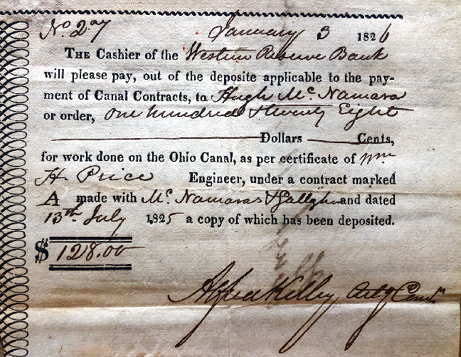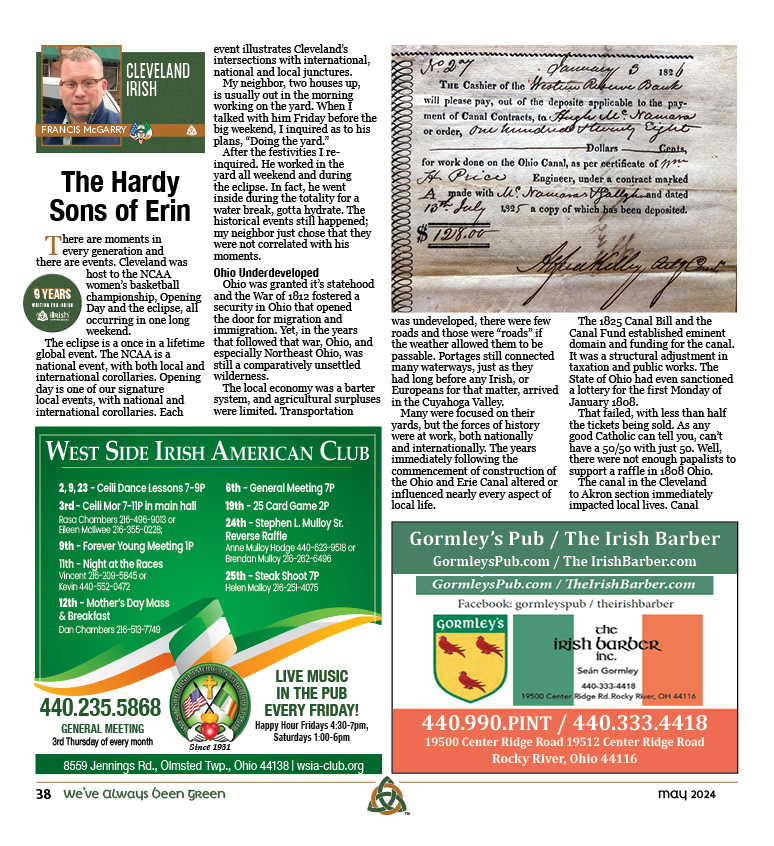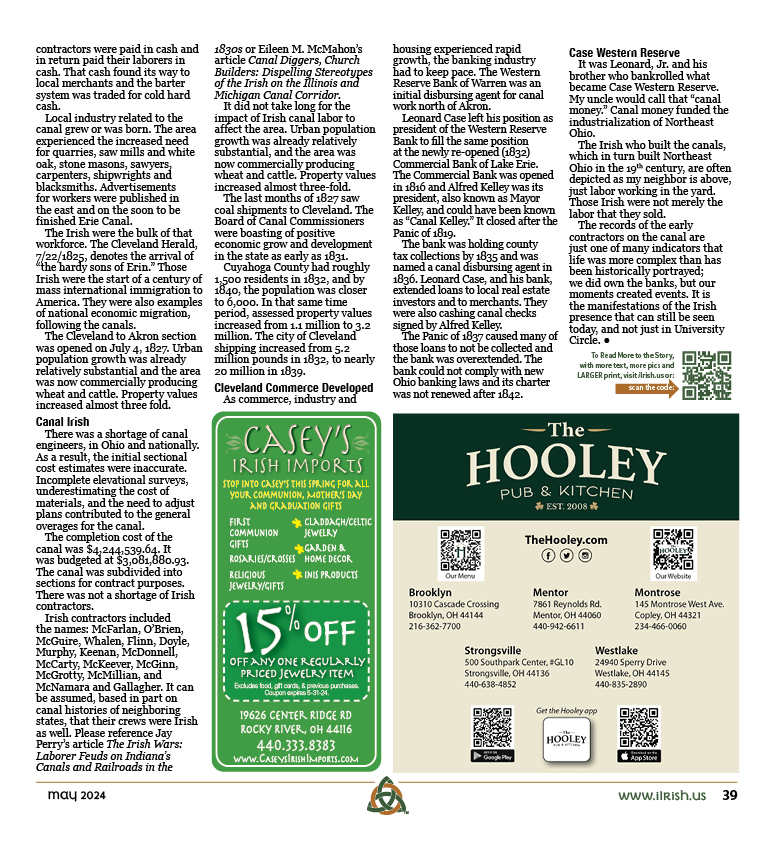
There are moments in every generation and there are events. Cleveland was host to the NCAA women’s basketball championship, Opening Day and the eclipse, all occurring in one long weekend.
The eclipse is a once in a lifetime global event. The NCAA is a national event, with both local and international corollaries. Opening day is one of our signature local events, with national and international corollaries. Each event illustrates Cleveland’s intersections with international, national and local junctures.
My neighbor, two houses up, is usually out in the morning working on the yard. When I talked with him Friday before the big weekend, I inquired as to his plans, “Doing the yard.”
After the festivities I re-inquired. He worked in the yard all weekend and during the eclipse. In fact, he went inside during the totality for a water break, gotta hydrate. The historical events still happened; my neighbor just chose that they were not correlated with his moments.
Ohio Underdeveloped
Ohio was granted it’s statehood and the War of 1812 fostered a security in Ohio that opened the door for migration and immigration. Yet, in the years that followed that war, Ohio, and especially Northeast Ohio, was still a comparatively unsettled wilderness.
The local economy was a barter system, and agricultural surpluses were limited. Transportation was undeveloped, there were few roads and those were “roads” if the weather allowed them to be passable. Portages still connected many waterways, just as they had long before any Irish, or Europeans for that matter, arrived in the Cuyahoga Valley.
Many were focused on their yards, but the forces of history were at work, both nationally and internationally. The years immediately following the commencement of construction of the Ohio and Erie Canal altered or influenced nearly every aspect of local life.
The 1825 Canal Bill and the Canal Fund established eminent domain and funding for the canal. It was a structural adjustment in taxation and public works. The State of Ohio had even sanctioned a lottery for the first Monday of January 1808.
That failed, with less than half the tickets being sold. As any good Catholic can tell you, can’t have a 50/50 with just 50. Well, there were not enough papalists to support a raffle in 1808 Ohio.
The canal in the Cleveland to Akron section immediately impacted local lives. Canal contractors were paid in cash and in return paid their laborers in cash. That cash found its way to local merchants and the barter system was traded for cold hard cash.
Local industry related to the canal grew or was born. The area experienced the increased need for quarries, saw mills and white oak, stone masons, sawyers, carpenters, shipwrights and blacksmiths. Advertisements for workers were published in the east and on the soon to be finished Erie Canal.
The Irish were the bulk of that workforce. The Cleveland Herald, 7/22/1825, denotes the arrival of “the hardy sons of Erin.” Those Irish were the start of a century of mass international immigration to America. They were also examples of national economic migration, following the canals.
The Cleveland to Akron section was opened on July 4, 1827. Urban population growth was already relatively substantial and the area was now commercially producing wheat and cattle. Property values increased almost three fold.
Canal Irish
There was a shortage of canal engineers, in Ohio and nationally. As a result, the initial sectional cost estimates were inaccurate. Incomplete elevational surveys, underestimating the cost of materials, and the need to adjust plans contributed to the general overages for the canal.
The completion cost of the canal was $4,244,539.64. It was budgeted at $3,081,880.93. The canal was subdivided into sections for contract purposes. There was not a shortage of Irish contractors.
Irish contractors included the names: McFarlan, O’Brien, McGuire, Whalen, Flinn, Doyle, Murphy, Keenan, McDonnell, McCarty, McKeever, McGinn, McGrotty, McMillian, and McNamara and Gallagher. It can be assumed, based in part on canal histories of neighboring states, that their crews were Irish as well. Please reference Jay Perry’s article The Irish Wars: Laborer Feuds on Indiana’s Canals and Railroads in the 1830s or Eileen M. McMahon’s article Canal Diggers, Church Builders: Dispelling Stereotypes of the Irish on the Illinois and Michigan Canal Corridor.
It did not take long for the impact of Irish canal labor to affect the area. Urban population growth was already relatively substantial, and the area was now commercially producing wheat and cattle. Property values increased almost three-fold.
The last months of 1827 saw coal shipments to Cleveland. The Board of Canal Commissioners were boasting of positive economic grow and development in the state as early as 1831.
Cuyahoga County had roughly 1,500 residents in 1832, and by 1840, the population was closer to 6,000. In that same time period, assessed property values increased from 1.1 million to 3.2 million. The city of Cleveland shipping increased from 5.2 million pounds in 1832, to nearly 20 million in 1839.

Cleveland Commerce Developed
As commerce, industry and housing experienced rapid growth, the banking industry had to keep pace. The Western Reserve Bank of Warren was an initial disbursing agent for canal work north of Akron.
Leonard Case left his position as president of the Western Reserve Bank to fill the same position at the newly re-opened (1832) Commercial Bank of Lake Erie. The Commercial Bank was opened in 1816 and Alfred Kelley was its president, also known as Mayor Kelley, and could have been known as “Canal Kelley.” It closed after the Panic of 1819.
The bank was holding county tax collections by 1835 and was named a canal disbursing agent in 1836. Leonard Case, and his bank, extended loans to local real estate investors and to merchants. They were also cashing canal checks signed by Alfred Kelley.
The Panic of 1837 caused many of those loans to not be collected and the bank was overextended. The bank could not comply with new Ohio banking laws and its charter was not renewed after 1842.
Case Western Reserve
It was Leonard, Jr. and his brother who bankrolled what became Case Western Reserve. My uncle would call that “canal money.” Canal money funded the industrialization of Northeast Ohio.
The Irish who built the canals, which in turn built Northeast Ohio in the 19th century, are often depicted as my neighbor is above, just labor working in the yard. Those Irish were not merely the labor that they sold.
The records of the early contractors on the canal are just one of many indicators that life was more complex than has been historically portrayed; we did own the banks, but our moments created events. It is the manifestations of the Irish presence that can still be seen today, and not just in University Circle.
Read Francis’s Cleveland Irish columns HERE!





*Francis McGarry holds undergraduate degrees from Indiana University in Anthropology, Education and History and a Masters in Social Science from the University of Chicago. He is the Executive Director of Bluestone Hibernian Charities and proprietor of McGarry Consulting. He is a past president of the Irish American Club East Side and the founder and past president of the Bluestone Division of the Ancient Order of Hibernians.


ends

Monthly newsmagazine serving people of Irish descent from Cleveland to Clearwater. We cover the movers, shakers & music makers each and every month.
Since our 2006 inception, iIrish has donated more than $376,000 to local and national charities.
GET UPDATES ON THE SERIOUS & THE SHENANIGANS!